Payroll accuracy in healthcare: Why it matters more than ever
In the fast-paced, high-stakes world of healthcare, every detail matters. While much of the focus rightly falls on patient outcomes, behind-the-scenes operations like payroll services in South Africa play a vital role in keeping the system running smoothly. Payroll accuracy in healthcare isn’t just about paying people on time but about building trust, maintaining compliance and ensuring staff are empowered to focus on what they do best: delivering quality care. With complex schedules, varied pay structures and strict regulatory oversight, even minor payroll errors can ripple into serious organizational challenges. This article explores why payroll accuracy in healthcare is more important than ever.
The unique demands of healthcare payroll
Healthcare organizations face unique payroll challenges that other industries rarely encounter. These include:
Non-traditional shifts
Nurses, doctors and support staff often work outside the standard 9-to-5 framework. Schedules can include overnight duties, 24-hour rotations, weekend coverage and emergency on-call hours. Each of these scenarios requires special attention to tracking time accurately and applying the correct compensation rates.
Multiple job roles
It’s not uncommon for one employee to serve in different capacities, such as a nurse doubling as a triage coordinator or an administrative assistant covering reception during emergencies. Each role may have a distinct hourly rate or salary classification, complicating payroll if not properly segmented and managed.
Variable pay structures
The compensation model in healthcare is far from linear. Employees might receive overtime, shift differentials, hazard pay for working in high-risk units, bonuses for extra hours, or retention incentives. These earnings need to be calculated precisely, often in real-time, to avoid shortchanging employees or exceeding budget constraints.
Regulatory layering
Beyond pay types and roles, healthcare payroll must align with union agreements, state-level labor laws, healthcare-specific compliance standards and institutional policies. Misalignments in any of these areas can lead to audit flags and reputational damage.
Credential-based pay changes
For some roles, pay rates depend on certifications or continuing education. If credentials are updated or expire, payroll systems must adapt accordingly.
Missing even a small detail in this intricate web of requirements can lead to payroll inaccuracies that affect staff trust, violate regulations and ultimately strain the healthcare facility’s operational efficiency.
The cost of inaccuracy: More than just numbers
When payroll errors occur in healthcare, the impact is both immediate and far-reaching. The cost is not just financial, it affects people, performance and public perception.
1. Eroded trust among staff
Healthcare professionals dedicate themselves to demanding, often life-saving work. When payroll is inaccurate, be it underpayments, late deposits or incorrect deductions, staff could feel devalued. Repeated errors breed frustration and a loss of confidence in leadership. This erosion of trust doesn’t just affect morale.It decreases employee engagement and can eventually lead to burnout.
2. Legal and regulatory risks
The healthcare industry is governed by a matrix of labor regulations, including wage laws, union contracts and sector-specific compliance standards. Payroll inaccuracies can quickly spiral into serious legal issues: underpaid overtime, misclassified workers or missed tax deadlines can trigger fines, lawsuits or even government intervention. For institutions already navigating tight margins and oversight, these risks are simply unacceptable.
3. High turnover and talent drain
Accurate payroll is a foundational element of employee satisfaction. When employees repeatedly experience paycheck discrepancies or benefit issues, they begin seeking more stable employment elsewhere. The healthcare sector already suffers from staffing shortages; adding preventable turnover only intensifies the burden on existing staff and inflates recruitment costs. Moreover, losing experienced personnel reduces institutional knowledge and lowers care quality.
4. Operational disruptions
Payroll errors don’t happen in a vacuum. Dissatisfied or underpaid employees are more likely to call in sick, disengage, or file grievances, all of which slow down operations. In a hospital or care facility, this can mean delayed procedures, understaffed departments and ultimately, compromised patient care. Consistent payroll issues can even damage the institution’s reputation, making it harder to attract both talent and patients.
In essence, inaccurate payroll creates a ripple effect from the administrative office to the patient’s bedside. Investing in payroll accuracy isn’t just a smart business move. It is a critical component of ethical and effective healthcare delivery.
Steps to evaluate and improve your current payroll system
If you’re unsure whether your payroll operations are as accurate and efficient as they should be, it’s time for a structured review. Consider this simplified assessment to uncover weaknesses and improvement opportunities:
- Is every shift type accounted for in payroll calculations?
Ensure that your payroll system consistently captures shift differentials, emergency call-ins, and overtime with precision.
- Are you tracking certifications and credential expiration dates?
Systems should automatically adjust pay rates when new qualifications are earned or existing credentials lapse, keeping compensation aligned with skill levels.
- Do your payroll tools sync seamlessly with time-tracking and scheduling platforms?
Integrated systems minimize manual entry errors and ensure that employees are paid accurately for time worked.
- Are you conducting routine payroll audits?
Monthly or quarterly checks can help catch discrepancies early, maintaining accuracy and transparency.
- Is your payroll team regularly trained on changing labor laws?
Regulatory landscapes evolve. Keeping your staff informed helps ensure compliance and prevents costly mistakes.
Improving payroll accuracy starts with recognizing where your current system stands. A thorough internal review, guided by these questions, lays the foundation for a more reliable, compliant and employee-friendly payroll process.
Accuracy isn’t optional, it’s operational survival
Payroll accuracy in healthcare is essential, where every second counts and every action impacts lives, precision is a non-negotiable standard. While this level of scrutiny is often associated with clinical procedures, it must equally apply to the administrative backbone, particularly payroll. Ensuring payroll accuracy is about preserving morale, complying with complex labor laws and safeguarding the integrity of your workforce.
Every payroll misstep, whether it’s a missed shift differential or an outdated certification rate has consequences that echo through your organization. From employee disengagement to regulatory fines and operational slowdowns, the costs are high, and the risks are real. That’s why healthcare leaders must treat payroll accuracy in healthcare as a strategic priority, not a backend function.
With decades of expertise in workforce solutions, we offer precision-engineered payroll services tailored specifically to your sector. From accurate time tracking to real-time compliance alignment, our end-to-end solutions ensure your team gets paid correctly. Don’t let payroll inaccuracies undermine your care quality or your reputation. Take the first step toward a healthier payroll system.











